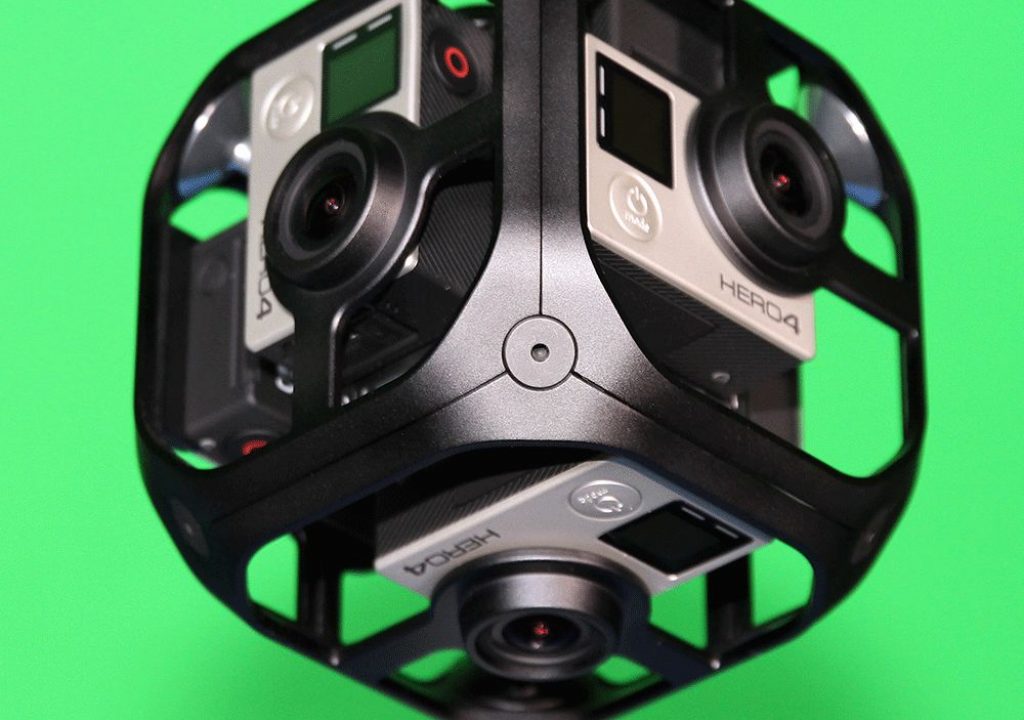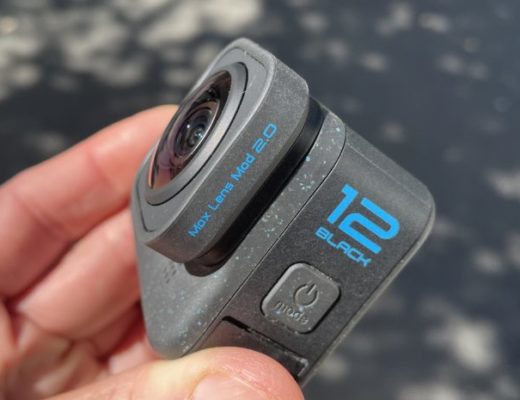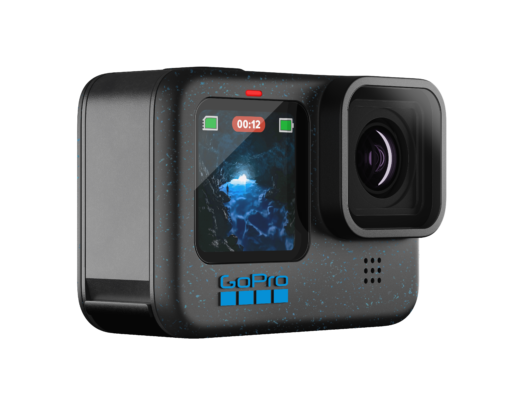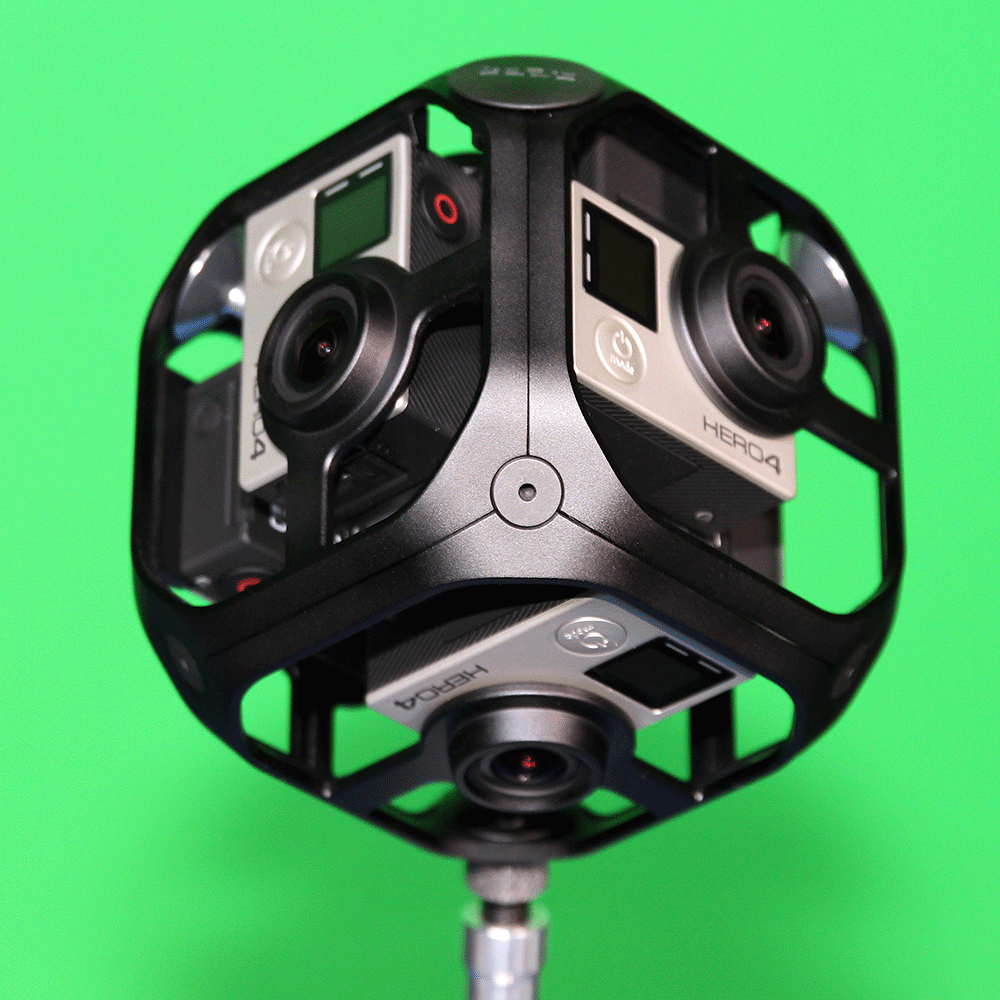
When it comes to shooting and delivering 360 content with multiple cameras there are several key workflow challenges many VR filmmakers face:
- Data wrangling and file management
- Syncing and managing multiple cameras
- Stitching and rendering VR content
GoPro has addressed these three major issues by developing their very cool and innovative OMNI package.
The OMNI package consists of:
- 6 x Hero 4 Black cameras
- 6 x Lexar 1000x 32 GB Micro SDHC memory cards
- 1 x OMNI Sync rig with control unit
- 1 x GoPro Remote
- 1 x Switronix Hypercore-98S battery with charger and camera V clamp
- 1 x Xcellon USB 3 card reader with 7 x ports
- 1 x pair of tweezers
- 1 x Pelican travel case
- GoPro OMNI software and licenses for Kolor
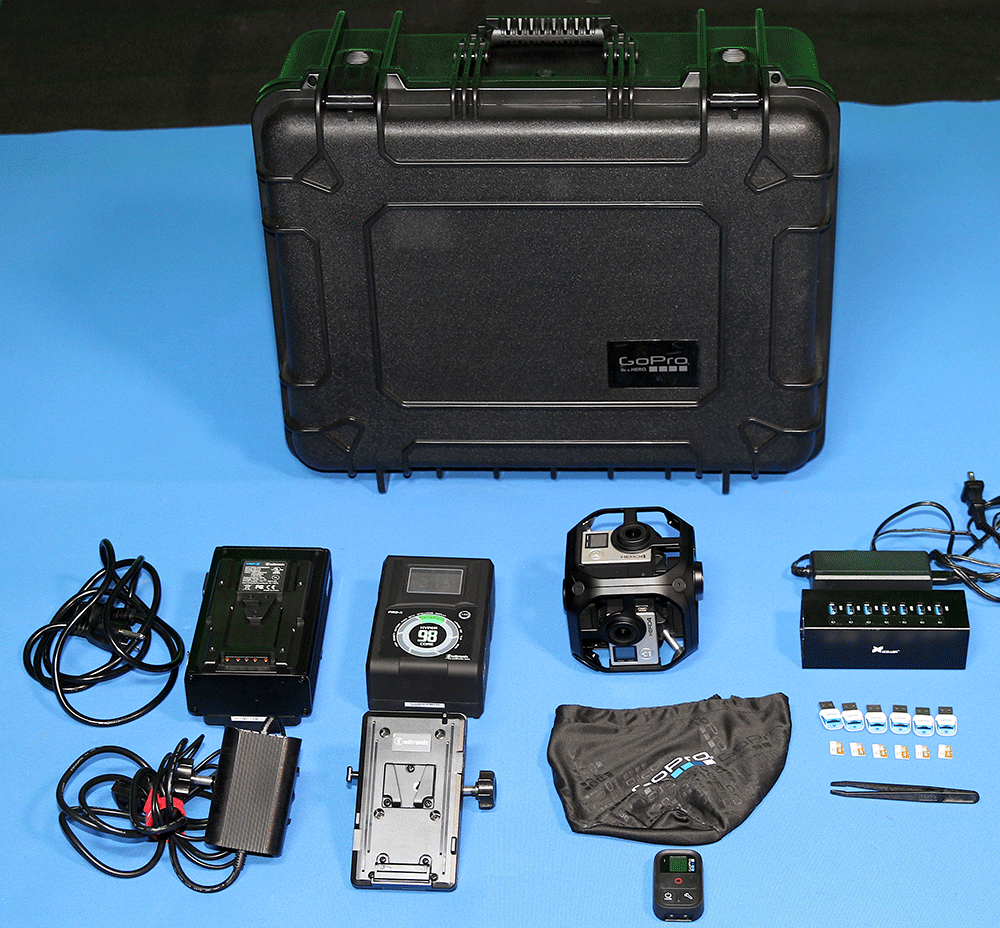
The integrated GoPro OMNI package allows VR content creators to quickly and easily shoot, stitch and deliver compelling 360 monoscopic content without the normal headaches associated with the process. It quite literally takes the pain out of much of the workflow involved in shooting and finishing VR content and as such is a welcome addition to the tools that VR filmmakers have at their disposal.
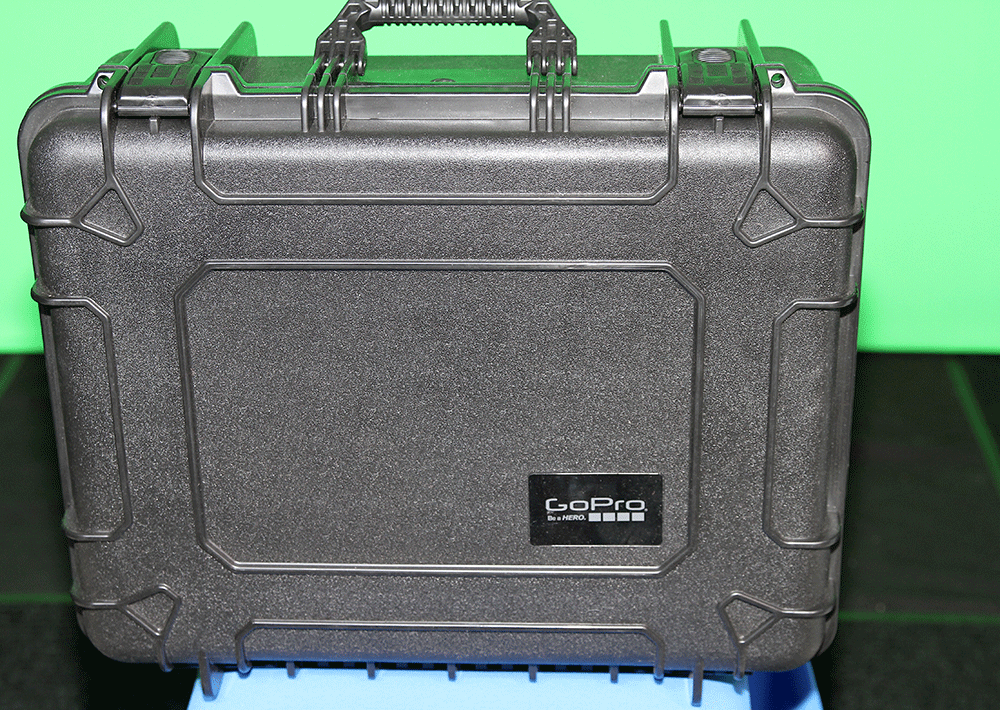
Typical Workflow
One minor but thoughtful item included in the OMNI package is a black plastic pair of tweezers – don’t lose this! If you have thick fingers like me, you need to use the tweezers to insert and remove the microSD cards from the Hero 4 cameras. With the cards inserted in the cameras you simply attach the power cord from the Switronix external battery into the power socket in the center of the rig and press the ON button on the GoPro remote control. Camera #1 acts as the master to the other five cameras and you make all configuration changes for all six cameras simply by adjusting camera #1. If you’ve ever used multi GoPro VR rigs you know how time consuming it can be to have to make changes to all the cameras in the rig and ensure that they all have identical settings. Once you’ve set the settings on camera #1 you simply press the red button on the GoPro remote and all six cameras start shooting at the same time. As ever its always best to physically check that the red light is on all six cameras but during all the shooting tests I carried out, there was never a hitch and all cameras started and stopped at the same time. Again, if you’ve ever shot with multi GoPros before you know how easy it is for one of the cameras not to start. Camera #1 not only acts as the master controller for all the cameras in the OMNI rig it also provides the sync signal to ensure that all cameras start at the same time. This makes it much easier to stitch the six video streams either using the provided OMNI importer software or Kolor AVP and APG.
The Switronic battery attaches to V mounting plate which can easily be clamped to your tripod and lasts around three hours on a full charge. It will also charge the in-camera GoPro batteries which is useful if you ever need to shoot in a confined space without a tripod. I used a monopod in several locations and it balanced well without the external battery attached. The aluminum rig frame is sturdy and light and easy to handle.
Once you’ve finished shooting you simply remove the microSD cards (using the tweezers) and insert them into the small SD card readers and plug them into the USB 3 hub. Then fire up the OMNI Importer software, make your rendering choices and sit back and let the software automatically stitch the six video streams and render out the final equirectangular clip. There are three quality versions to choose and depending on the power of your PC or Mac it can take quite a while to render out a bunch of takes. If you need to view your clips in a hurry there’s a ‘Dailies’ type level which gives a reasonably good render but if you want something for final output at the best quality, you select the Cineform option. On a beefy PC with a decent GPU, stitching and rendering out 30 clips to the highest quality took around three hours.
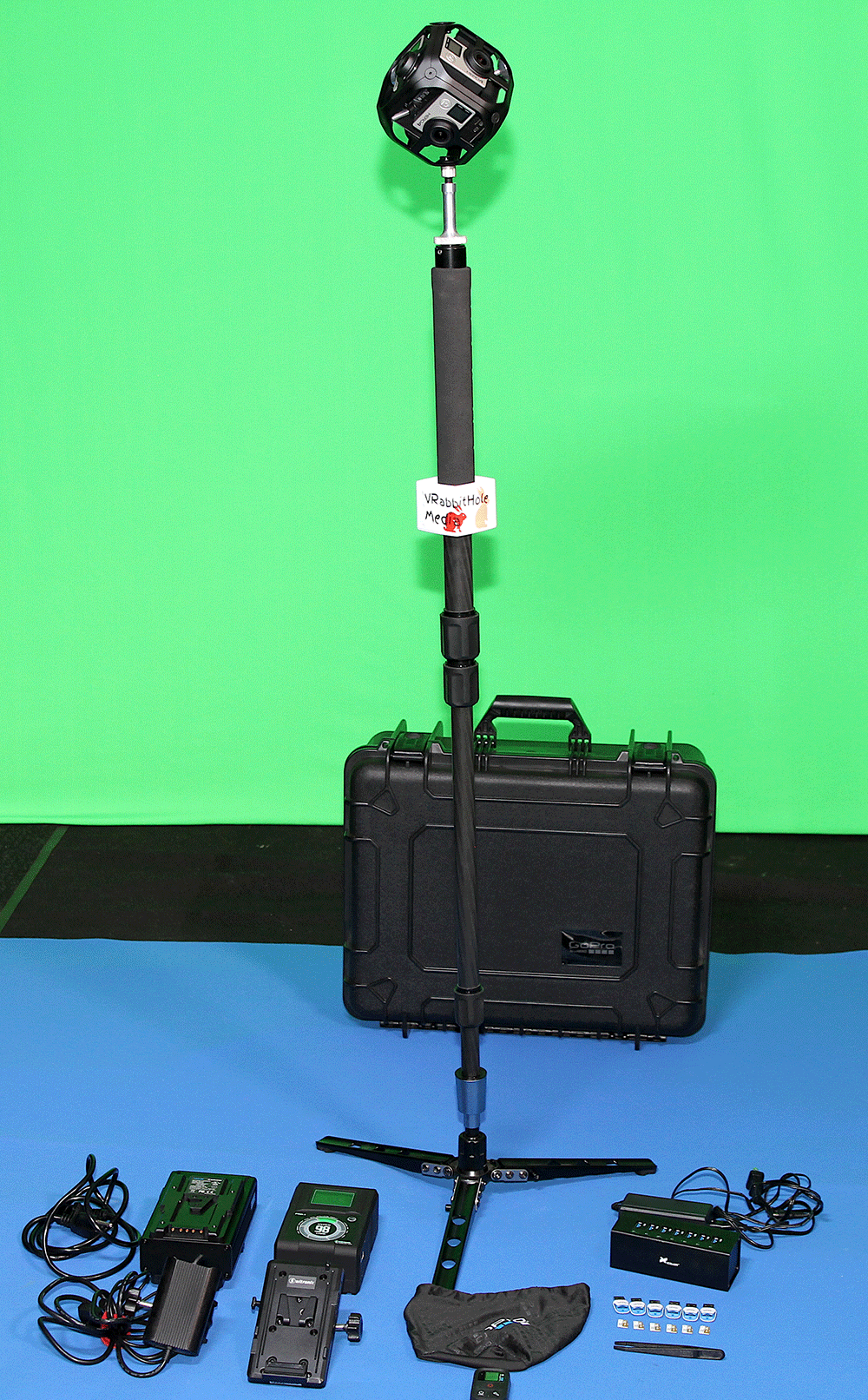
The OMNI Importer software not only does the stitching and rendering but also takes care of the data management. This is very handy and saves a lot of time and effort – if you’ve ever had to copy six micro SD cards full of .mp4s to you PC and then organize all your clips by takes (rather than by cameras) you’ll know what a joy that is! The OMNI Importer takes care of all the data wrangling as well as the stitching and once you’ve connected it to the USB hub and made your rendering choices you can walk away and let it to its thing while you take the dog for a walk.
Conclusion
The OMNI rig with all the kit and caboodle costs just under $5000 or if you already have six Hero 4 Black cameras you can purchase just the OMNI Sync rig for $1500. But be aware the sync rig only works with Hero 4 cameras and not the new Hero 5s. The final image quality of the stitched equirectangular file coming out of the OMNI software is excellent as it is but if you need to tweak it in any way you can easily import the file into the standard KOLOR software package and adjust accordingly. For anyone serious about using GoPro cameras to capture 360º VR content in a reliable and efficient way, the OMNI sync package is a no brainer. Well worth the money and will save you countless hours in stitching and data wrangling.
Pros
- If you want a professional entry level package for shooting multi-camera monoscopic 360 content, then the GoPro OMNI package is a great choice
- It offers a nice compromise between price and performance with up to 8K resolution using the Cineform codec.
Cons
- The main drawback of the rig is the parallax issue when talent gets too close to the rig which causes stitching artifacts when people move around. Keep your main subject at least six feet away from the OMNI and all should be good.
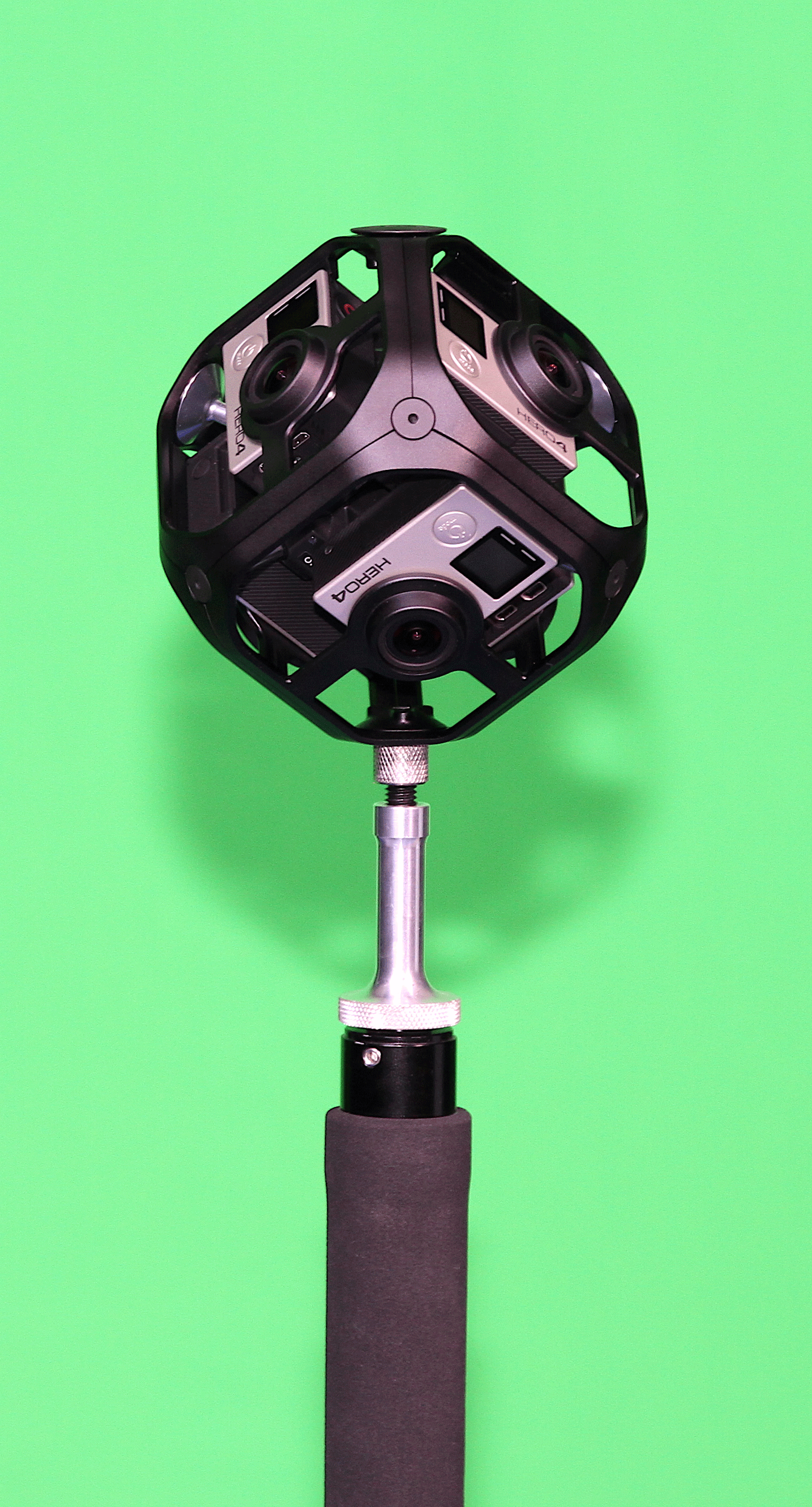

Filmtools
Filmmakers go-to destination for pre-production, production & post production equipment!
Shop Now